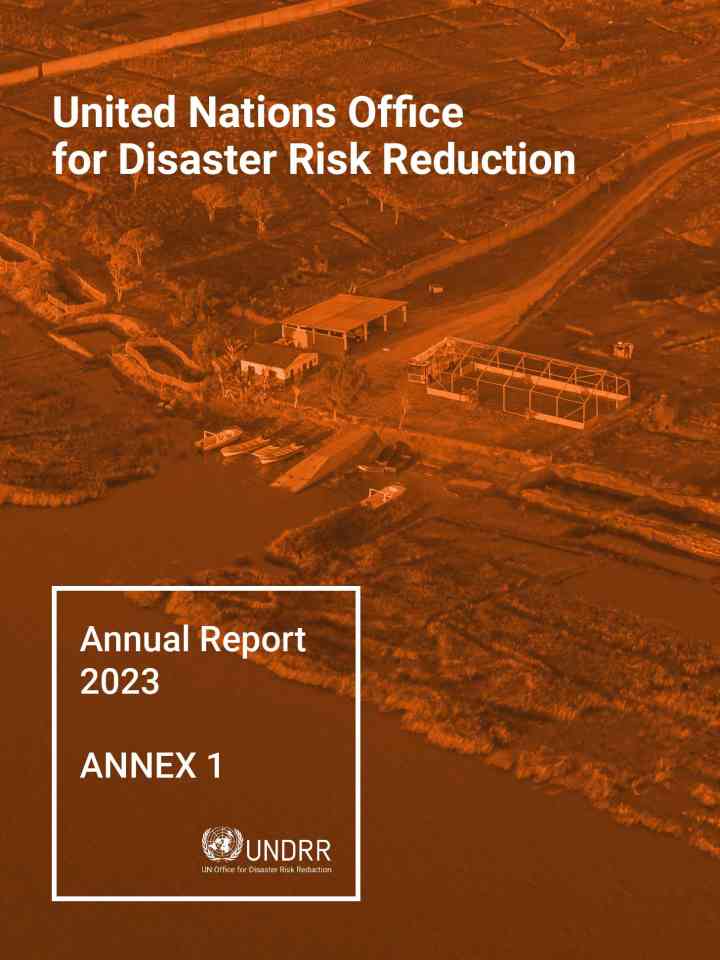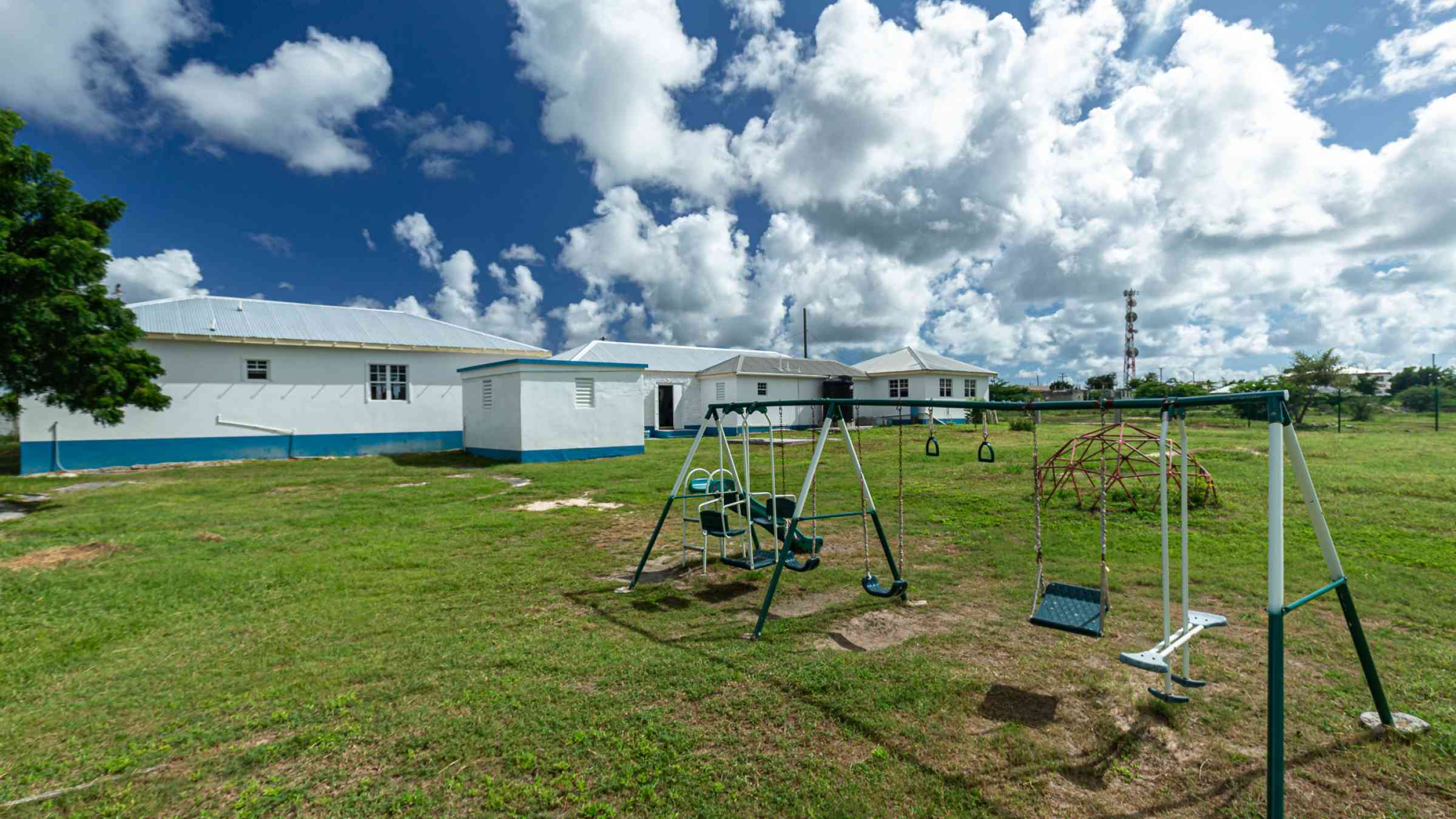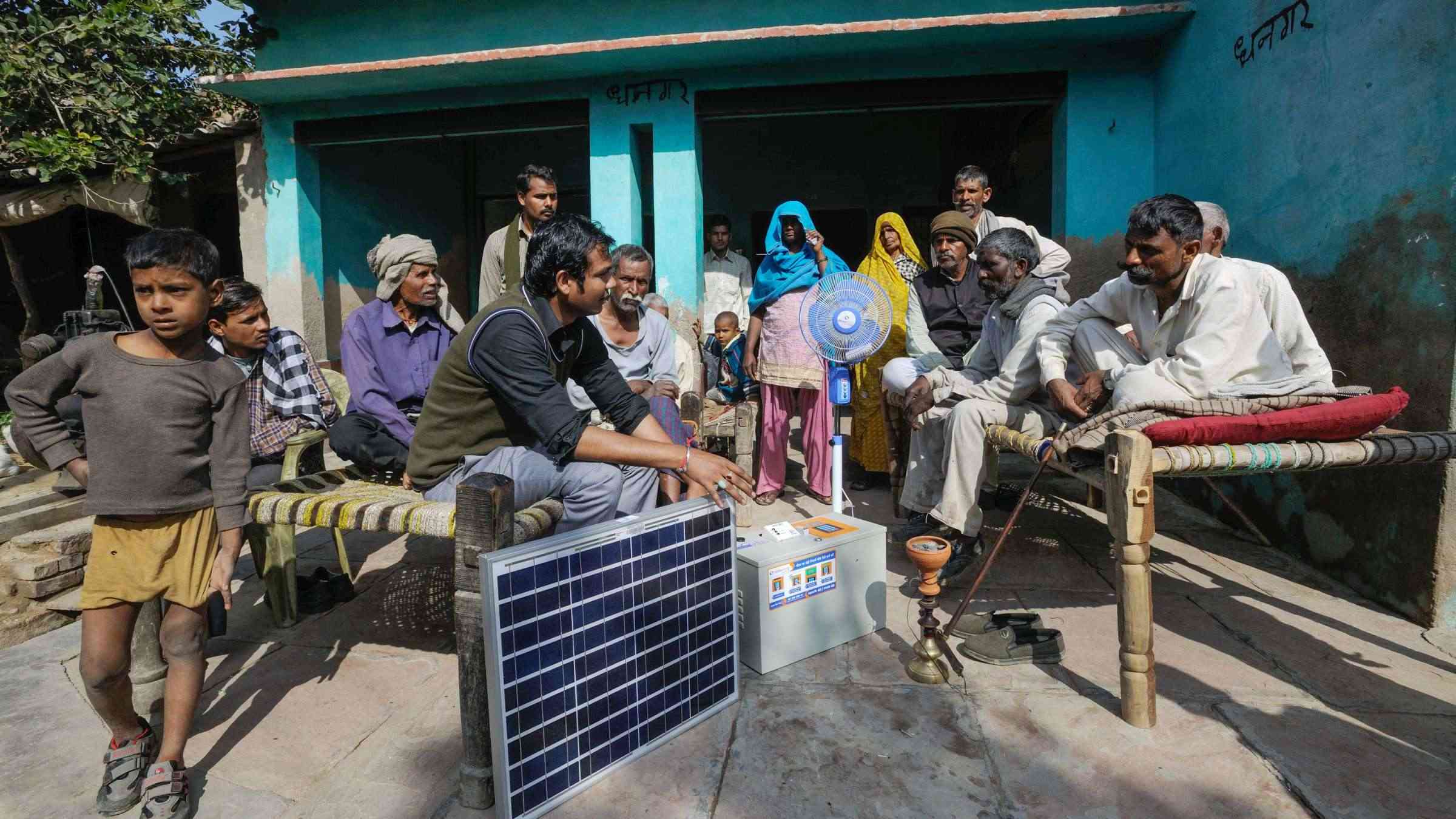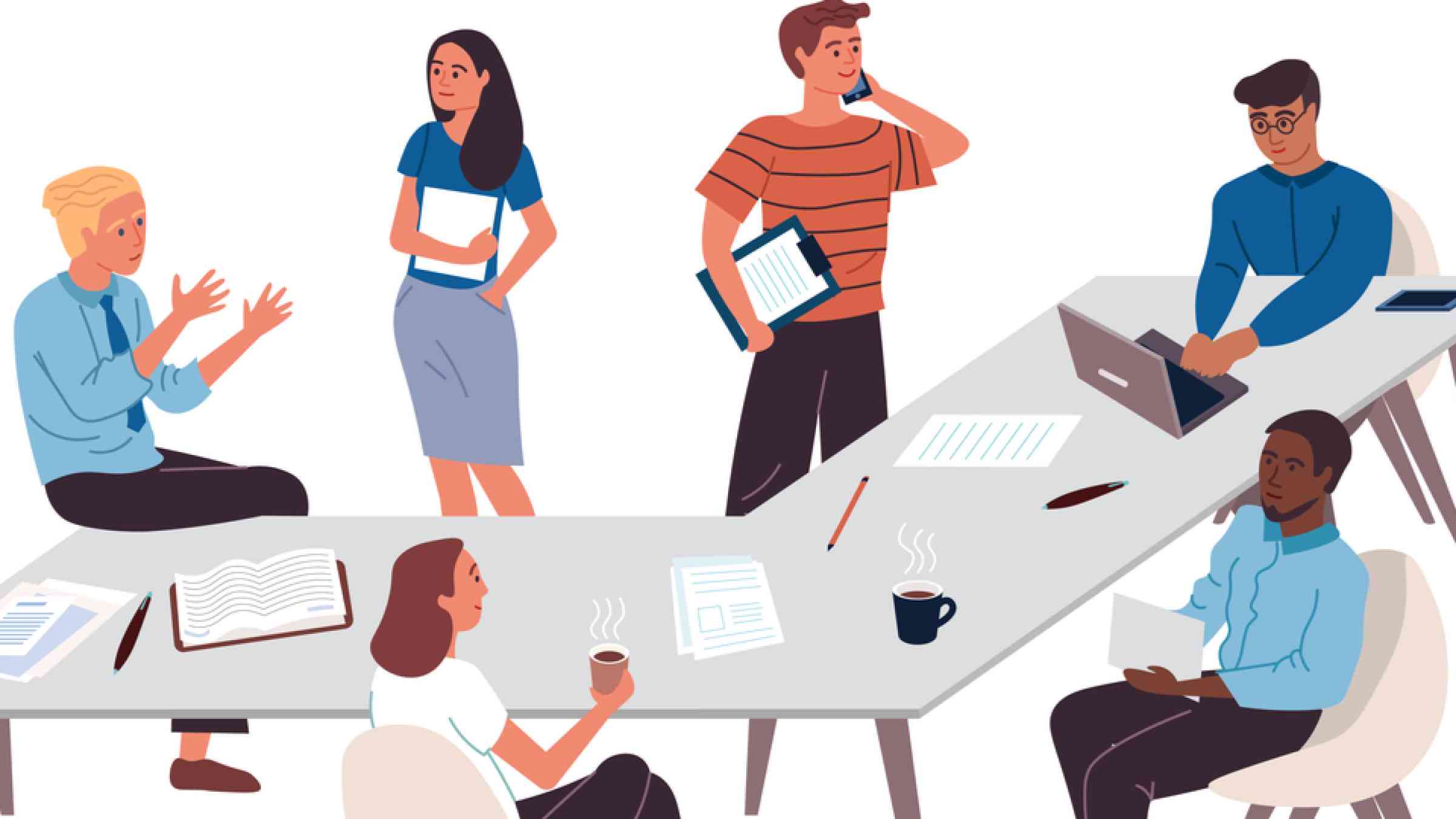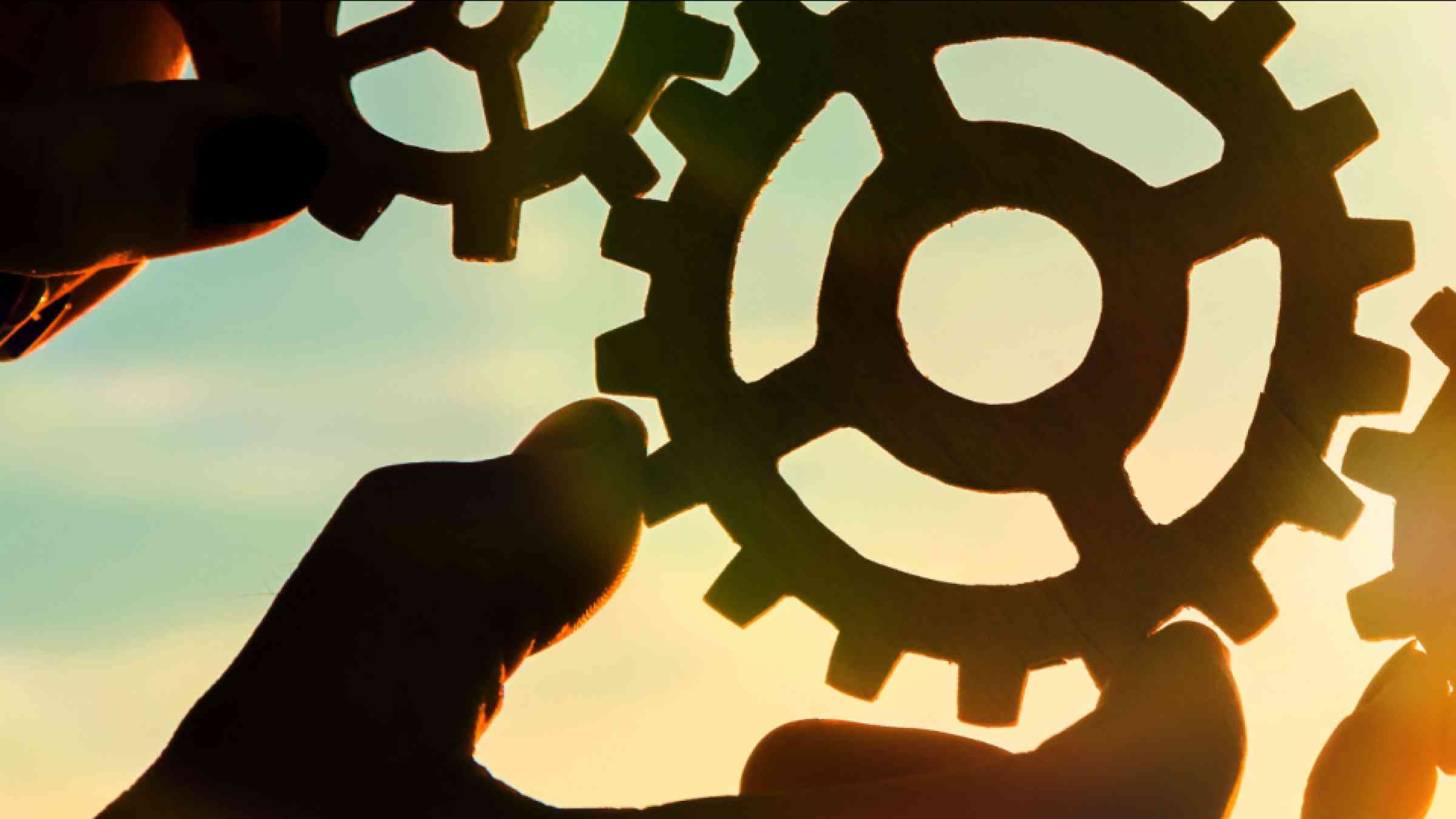UNDRR 2023 Annual report
United Nations Office for Disaster Risk Reduction
Annual Report 2023
Accelerating resilience for all
- Foreword
- 2023 In numbers
- Risk information and evidence-based policies
- Strengthening governance, strategies and capacity at all levels
- Catalysing investments and actions through partnerships and stakeholder engagement
- Advocating for resilience
- Donor overview
Or, keep scrolling to read online highlights
Foreword
In 2023, we crossed the halfway point of the Sendai Framework for Disaster Risk Reduction. This milestone was marked by a renewed global determination to accelerate progress in the remaining years to 2030, as was expressed in the UN General Assembly’s political declaration on the Sendai Framework’s Midterm Review. This acceleration is urgently needed if the world is to rise above the growing disaster risks driven by the climate crisis, our disregard for the environment, and unplanned urban development.
UNDRR, through its Strategic Framework 2022-2025, remains committed to supporting governments and stakeholders to achieve this acceleration, as this Annual Report captures.
The Annual Report 2023 also lists several accomplishments of which we are particularly proud. Among them is the decision made at COP28 to award UNDRR and UNOPS the hosting of the secretariat of the Santiago network for averting, minimizing and addressing loss and damage. This decision is not only a vote of confidence in UNDRR, but more importantly is a clear recognition that disaster risk reduction is inseparable from the climate loss and damage agenda.
We are also proud of the progress that has been achieved under the Early Warnings for All initiative, which concluded its first year of implementation. Thanks to joint efforts in 2023 by the UN Secretary-General’s Advisory Panel members, key donors, and implementing partners across the UN system, the initiative is now on its way to deliver life-changing upgrades to early warning systems in at least 30 countries by the end of this year.
Moreover, in 2023, we saw the Making Cities Resilient 2030 (MCR2030) initiative expand to cover half a billion people in 85 countries. As the majority of disasters are small-scale, local-level events, supporting municipalities to plan and implement resilience plans remains a critical priority for UNDRR to reduce the global burden of disasters.
These are some of the accomplishments in this report which we hope you will find informative and inspirational.
On a final note, I would also like to use this space to express my gratitude to the former Special Representative of the Secretary-General for Disaster Risk Reduction, Ms. Mami Mizutori, who completed her second term at the end of 2023. We thank her for stewardship of UNDRR over six eventful years, and we look forward to welcoming her successor, Mr. Kamal Kishore, in the near future.
Onward we push until we achieve resilience for all.
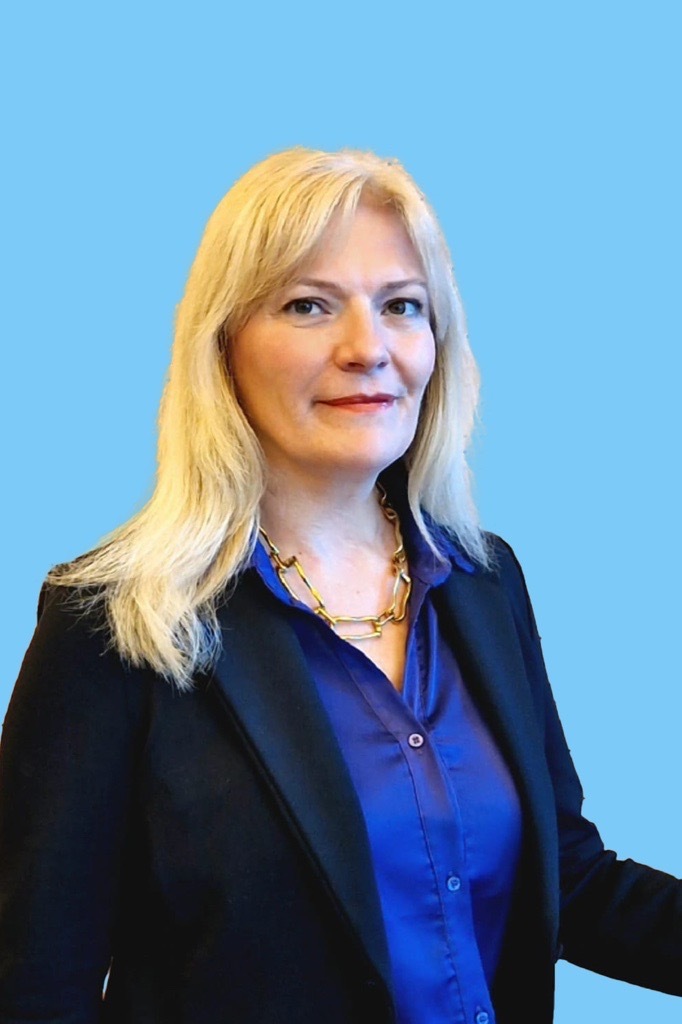
Paola Albrito
Acting Special Representative of the Secretary-General for Disaster Risk Reduction
2023 In numbers
Million USD in income
Member States reporting in the Sendai Framework Monitor
applying DRR to inform Common Country Analysis process
countries contributions to the MTR process resulting in a Political Declaration
of people reported applying UNDRR’s training at work
government officials and stakeholders from 169 countries were trained on urban resilience through UNDRR’s Global Education and Training Institution
journalists received DRR training
people received training in the MCR Disability Scorecard
01
Risk information and evidence-based policies
A comprehensive understanding of disaster risks is essential to building resilience. Through a wide range of initiatives and partnerships, UNDRR facilitates the gathering, sharing and analysis of verified risk information to empower decision-makers across government to formulate and finance evidence-based DRR policies and programmes. At the same time, UNDRR supports governments and other stakeholders to integrate climate change and DRR into broader strategies and policies for an all-of-society approach to implementing the Sendai Framework for Disaster Risk Reduction and the Sustainable Development Goals (SDGs).
In 2023, UNDRR stepped up efforts to strengthen the disaster data ecosystem, leveraging its role as the custodian of the Sendai Framework for Disaster Risk Reduction 2015-2030. As a result, by the end of the year, a total of 159 countries had started using the Sendai Framework Monitor (SFM), the official tool for governments to report progress against the seven targets of the framework and selected targets of the SDGs. Moreover, 69 countries are now filing disaster data disaggregated by sex, age, and disability, demonstrating the growing recognition that effective DRR requires an all-of society approach that leaves no-one behind. The value of the SFM is further evidenced by the fact that 85% of these countries have reported on at least five Sendai Framework targets, and 70% have reported on all SDG-related targets.
At COP28, data from the SFM informed several of the climate conference’s key outcomes and, looking forward, will help operationalize a range of important climate initiatives. Such data also fed into the 2023 edition of the Global Status of Multi-Hazard Early Warning Systems report, which outlines the encouraging progress that has been made under the Early Warnings for All (EW4All) initiative.
02
Strengthening governance, strategies and capacity at all levels
Through its regional offices, UNDRR supports Member States implement the Sendai Framework and improve disaster risk governance through a collaborative, inclusive, and multi-stakeholder approach that involves all segments of society. These efforts focus on inclusive and participatory actions to reduce risk and address the climate crisis at national, regional, and global levels. They are guided by clear visions, strategic plans, capacity building, advisory services and inter-sectoral coordination. It also helps countries to share best practices and develop joint programmes to improve their capacity to deal with common and cross-border disaster challenges.
UNDRR is the focal point in the United Nations system for the coordination of disaster reduction thought implementation of the Sendai Framework. Accordingly, it was under UNDRR’s coordination that in response to the findings of the MTR SF and its Political Declaration the UN Senior Leadership Group on DRR for Resilience endorsed a set of recommendations to support Member States in their efforts to accelerate Sendai’s implementation. These recommendations will guide the UN’s system-wide support for DRR, climate change adaptation and resilience building until 2030 and complement the commitments made in the UN Plan of Action on DRR for Resilience. They include strengthening risk governance at all levels, accelerating efforts to riskinform development programming, and boosting an all-of-society approach to DRR.
Throughout 2023, UNDRR pursued its strategic efforts to help national governments and local authorities develop, implement and finance climate-sensitive, inclusive multi- hazard DRR strategies. This often entailed supporting local governments and stakeholders enhance resilience through the Making Cities Resilient 2030 (MCR230) initiative, a global platform of practitioners, thought-leaders, financiers and donors, policy makers, technical agencies and networks committed to delivering on the 2030 Agenda.
03
Catalysing financial investments through stakeholder engagement and leaving no one behind
UNDRR catalyses investment and action through partnerships and stakeholder engagement in line with the Sendai Framework’s emphasis on a whole-of-society approach to DRR. In practice, this means engaging governments, the private sector, parliamentarians, civil society, international financial institutions, the international academic and scientific community, the media, youth groups and other key stakeholders.
UNDRR encourages such engagement to address infrastructure resilience, accelerate DRR financing, de-risk investments, build coherence with the 2030 Agenda and scale up DRR in fragile contexts, with a particular focus on those most at risk to ensure no-one is left behind. It continues to strengthen strategic, impact-driven partnerships, including within the UN system, by enhancing technical cooperation to improve the way DRR is promoted in UN processes at the global level and mainstreamed into intergovernmental policy-making. Significant progress has been made towards UNDRR’s goal of deepening coherence between the implementation of the Sendai Framework and other global intergovernmental agreements on sustainable development and climate change.
UNDRR’s commitment to an all-of-society approach to reducing the risks associated with disasters, as mandated by the Sendai Framework, is most clearly manifested in the Stakeholder Engagement Mechanism (UNDRR-SEM) it established in 2018 as part of wider UN efforts to broaden participation in UN activities related to sustainable development and to empower non-state stakeholders to integrate DRR into the 2030 Agenda.
Over the course of 2023, participation in the UNDRR-SEM grew by 23%, to reach 806 non-State stakeholders from 106 countries and territories across the world. The mechanism provides civil society and community-based organizations the opportunity to strategically engage in and support global and regional policy discussions on the Sendai Framework and related instruments, such as the SDGs, the Paris Agreement, the Addis Ababa Action Agenda, the New Urban Agenda, and Financing for Development.
04
Advocating for resilience
UNDRR delivers evidence-based advocacy initiatives with clear calls to action to invest in prevention. Communication campaigns highlight the benefits that accrue through DRR measures, demonstrating why investing in DRR is in the best interest of people and the planet. UNDRR continued to curate and synthesise information from a range of trusted sources on DRR policy analysis, research evidence and lessons, drawing from implementation experience and innovation in community and international settings.
UNDRR also invests in enhancing its digital and social media platforms to provide compelling, solutions-focused content that connects, equips and mobilizes stakeholders to act as agents of change. UNDRR works with a range of media partners to play an active role in DRR and to promote a whole-of-society approach where managing risk becomes everyone’s business.
At the heart of its public campaigning efforts, UNDRR leads two major international days; the International Day for Disaster Risk Reduction and the World Tsunami Awareness Day. In 2023, both days focused on fighting inequality as one of the main drivers of risk, supporting messaging that struck at the heart of the SDG agenda, and enabled partnerships with other UN system partners.
05
Donor overview
In 2023, UNDRR received USD 53.55 million in financial contributions. The biennial Work Programme 2022-23 had a funding requirement of USD 110 million, including USD 50.37 million for 2023. USD 45.59 million was mobilized to cover the 2023 cost plan.
UNDRR would like to thank all its donors, without whose generous contribution, the crucial work in accelerating global efforts in disaster risk reduction to ensure a more resilient and more sustainable future for all would not be possible.
Flexible core funding is vitally important to UNDRR. The flexibility of this funding enables the office to more efficiently and effectively deliver on its Work Programme, to adjust to changing circumstances and facilitate strategic forward planning, as 99.9% of UNDRR’s total funding is through extra-budgetary resources. Ten donors, namely China, Finland, France, Japan, Luxembourg, Norway, Philippines, Republic of Korea, Sweden, Switzerland, provided full or partial unearmarked core support for UNDRR, providing USD 13.1 million in 2023, which represents 24% of funding received.
Multi-year agreements further support strategic planning through predictable funding. UNDRR continued to advocate for such agreements and signed three new multi-year contributions with Canada, the Netherlands, Republic of Korea and the United States of America in 2023. UNDRR also has multi-year agreements from previous years with Australia, CDRI, China, CREWS, European Union, Finland, Germany, Luxembourg, Norway, Republic of Korea, Sweden, Switzerland and United States of America.
The top ten donors to UNDRR — Sweden, Germany, USA, Japan, Italy, Australia, Switzerland, Norway, Republic of Korea and CREWS — each contributed more than USD 2 million in 2023. UNDRR was particularly pleased to welcome five new and returning donors to UNDRR in 2023: Canada, Mauritius, Poland, Portugal and the Netherlands.
In-kind contributions were another important source of support to UNDRR this year with ten (10) Junior Professional Officers (JPOs) provided by Finland, Italy, Japan, Republic of Korea, the Netherlands, Switzerland and the United States of America (4). Throughout the year, UNDRR facilitated peer-to-peer exchange and knowledge sharing through regular consultations and dialogue with UN Member States at the UNDRR Support Group in Geneva, the Group of Friends in New York, as well as two donor meetings and two Early Warnings for All thematic briefings to donors held virtually.
Download the report
You've reached the end of the online highlights. Learn more in the full 40-page report and Annex I.
More on UNDRR's impact
It’s time to break the cycle of disaster > response > dependency > repeat.

